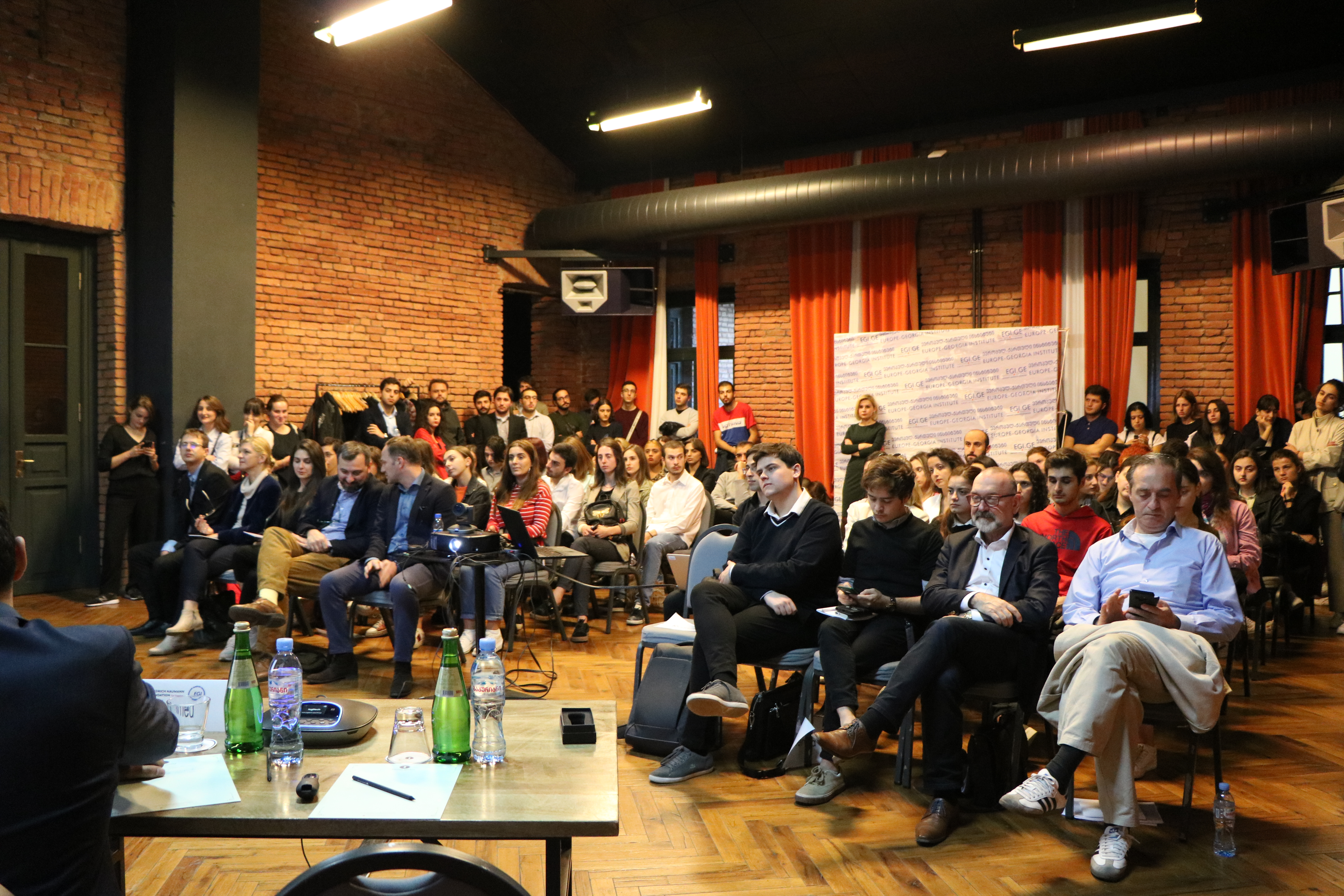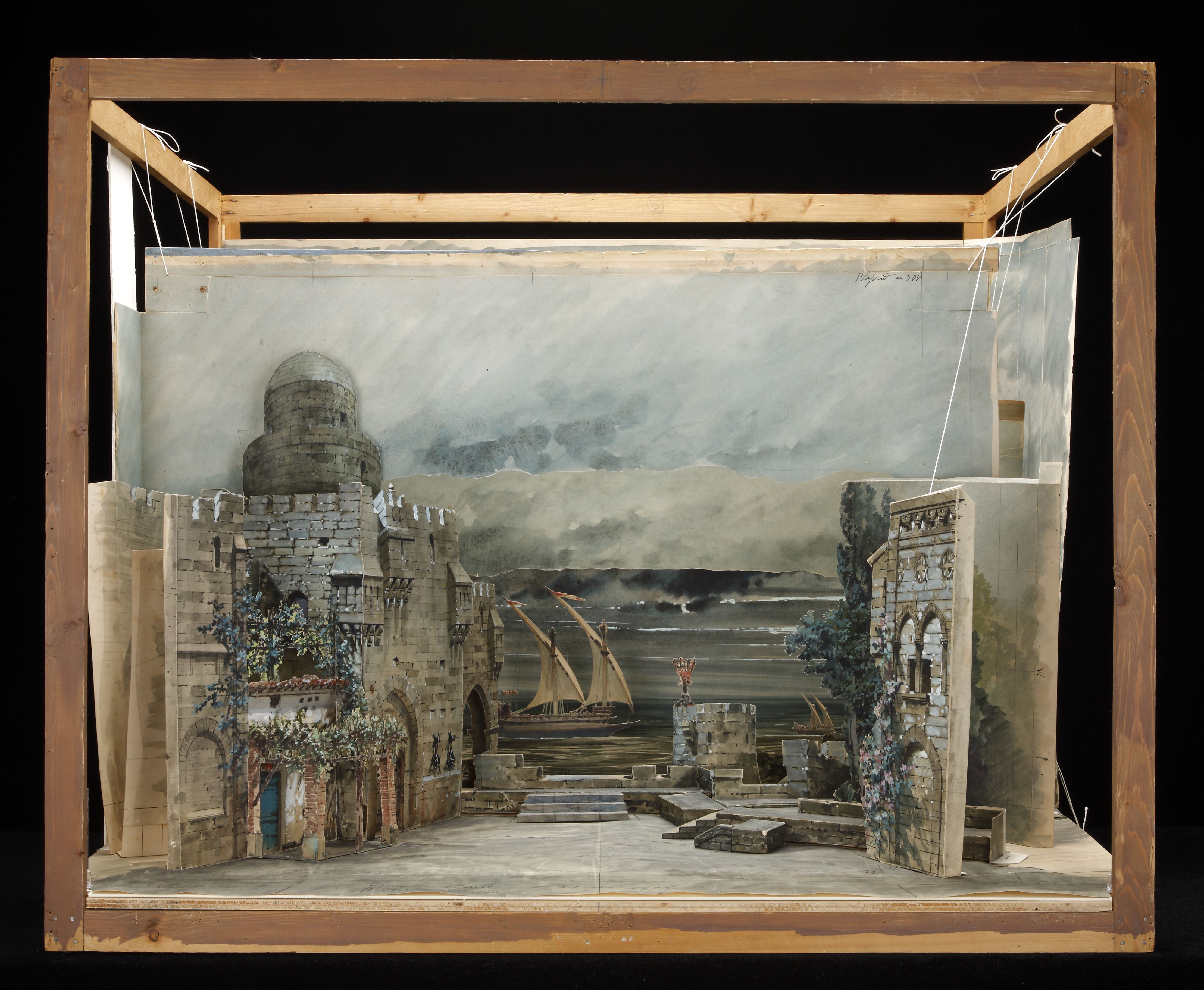|
OISTAT
The International Organisation of Scenographers, Theatre Architects and Technicians (OISTAT) is a non-governmental organization (NGO) founded in 1968 in Prague, Czech Republic. According to its founding name, the organization is mainly a network for theatre designers, theatre architects and theatre technicians around the world, made up of people associated with creating or studying live performances, including educators, researchers and practitioners. The organization has members from 51 countries, in the membership categories: Centre Member, Associate Member and Individual Member. History The predecessor of the organization was the scenography section of the International Theatre Institute (ITI), founded in 1948. This institute was expected to form an international co-operation of all artistic fields and establish leading publishing and educational direction from the drama sections. The project failed, but interest in the visual elements of theatre grew. Shortly after, in 1958, t ... [...More Info...] [...Related Items...] OR: [Wikipedia] [Google] [Baidu] |
Non-governmental Organization
A non-governmental organization (NGO) is an independent, typically nonprofit organization that operates outside government control, though it may get a significant percentage of its funding from government or corporate sources. NGOs often focus on humanitarian or social issues but can also include clubs and associations offering services to members. Some NGOs, like the World Economic Forum, may also act as lobby groups for corporations. Unlike international organizations (IOs), which directly interact with sovereign states and governments, NGOs are independent from them. The term as it is used today was first introduced in Article 71 of the UN Charter, Article 71 of the newly formed United Nations Charter in 1945. While there is no fixed or formal definition for what NGOs are, they are generally defined as nonprofit entities that are independent of governmental influence—although they may receive government funding. According to the United Nations Department of Global Communic ... [...More Info...] [...Related Items...] OR: [Wikipedia] [Google] [Baidu] |
Prague
Prague ( ; ) is the capital and List of cities and towns in the Czech Republic, largest city of the Czech Republic and the historical capital of Bohemia. Prague, located on the Vltava River, has a population of about 1.4 million, while its Prague metropolitan area, metropolitan area is home to approximately 2.3 million people. Prague is a historical city with Romanesque architecture, Romanesque, Czech Gothic architecture, Gothic, Czech Renaissance architecture, Renaissance and Czech Baroque architecture, Baroque architecture. It was the capital of the Kingdom of Bohemia and residence of several Holy Roman Emperors, most notably Charles IV, Holy Roman Emperor, Charles IV (r. 1346–1378) and Rudolf II, Holy Roman Emperor, Rudolf II (r. 1575–1611). It was an important city to the Habsburg monarchy and Austria-Hungary. The city played major roles in the Bohemian Reformation, Bohemian and the Protestant Reformations, the Thirty Years' War and in 20th-century history a ... [...More Info...] [...Related Items...] OR: [Wikipedia] [Google] [Baidu] |
International Theatre Institute
The International Theatre Institute ITI is the world’s largest performing arts organisation, founded in 1948 by theatre and dance experts and UNESCO. It has hosted various events through its history, including the Theatre of Nations, an international festival of performers from around the world staged in different countries, from 1956 until at least the 1980s; and it continues to organise International Dance Day and World Theatre Day every year at the UNESCO, Paris. Goals Dedicated to performing arts, ITI advances UNESCO’s goals of mutual understanding and peace and advocates for the protection and promotion of cultural expressions, regardless of age, gender, creed or ethnicity. It works to these ends internationally and nationally in the areas of arts education, international exchange and collaboration, and youth training. To achieve its mission, the International Theatre Institute: *encourages activities and creation in the field of the live performing arts (drama, ... [...More Info...] [...Related Items...] OR: [Wikipedia] [Google] [Baidu] |
Jean Darcante
Jean Darcante, real name Jean-Louis Albassier, (1 April 1910 – 18 March 1990) was a French actor and theatre director. He was managing director of the théâtre de la Renaissance in Paris from 1946 to 1957. (accessdate on 23 February 2016) Filmography Actor *: '' Girls of Paris'' (by Claude Vermorel) – Roland *: ''[...More Info...] [...Related Items...] OR: [Wikipedia] [Google] [Baidu] |
Scenography
Scenography is the practice of crafting stage environments or atmospheres. In the contemporary English usage, scenography can be defined as the combination of technological and material stagecrafts to represent, enact, and produce a sense of place in performance. While inclusive of the techniques of scenic design and set design, scenography is a holistic approach to the study and practice of all aspects of design in performance. It also includes Lighting design, the design of lighting, Sound design, sound, and Costume design, costumes. Etymology and cultural interpretations The term scenography is of Greek origin (''skēnē'', meaning 'stage or scene building'; ''grapho'', meaning 'to describe') originally detailed within Aristotle's ''Poetics'' as 'skenographia'. Nevertheless, within continental Europe, the term has been closely aligned with the professional practice of :fr:scénographie, scénographie and is synonymous with the English-language term 'Scenic design, theatre de ... [...More Info...] [...Related Items...] OR: [Wikipedia] [Google] [Baidu] |
United States Institute For Theatre Technology
The United States Institute for Theatre Technology (USITT) is a membership organization which aims to advance the skills and knowledge of theatre, entertainment and performing arts professionals involved in the areas of design, production and technology, and to generally promote their interests. To this end, the USITT mounts conferences and exhibitions, promulgates awards and publications (including the official journal ''Theatre Design & Technology''), and supports research. USITT is a non-profit organization which has its headquarters in Syracuse, New York. USITT heads up a conference held annually since 1961. The conference focuses on various workshops, that help educate attendees on several aspects of theatre. They also have a stage expo, in which companies showcase their products to the individuals attending the conference. There are also many opportunities for students to show their portfolios for review, and to get a look at programs offered by universities and college ... [...More Info...] [...Related Items...] OR: [Wikipedia] [Google] [Baidu] |
Organizations Established In 1968
An organization or organisation ( Commonwealth English; see spelling differences) is an entity—such as a company, or corporation or an institution ( formal organization), or an association—comprising one or more people and having a particular purpose. Organizations may also operate secretly or illegally in the case of secret societies, criminal organizations, and resistance movements. And in some cases may have obstacles from other organizations (e.g.: MLK's organization). What makes an organization recognized by the government is either filling out incorporation or recognition in the form of either societal pressure (e.g.: Advocacy group), causing concerns (e.g.: Resistance movement) or being considered the spokesperson of a group of people subject to negotiation (e.g.: the Polisario Front being recognized as the sole representative of the Sahrawi people and forming a partially recognized state.) Compare the concept of social groups, which may include non-or ... [...More Info...] [...Related Items...] OR: [Wikipedia] [Google] [Baidu] |
Exhibitions
An exhibition, in the most general sense, is an organized presentation and display of a selection of items. In practice, exhibitions usually occur within a cultural or educational setting such as a museum, art gallery, park, library, exhibition hall, or World's fairs. Exhibitions can include many things such as art in both major museums and smaller galleries, interpretive exhibitions, natural history museums and history museums, and also varieties such as more commercially focused exhibitions and trade fairs. They can also foster community engagement, dialogue, and education, providing visitors with opportunities to explore diverse perspectives, historical contexts, and contemporary issues. Additionally, exhibitions frequently contribute to the promotion of artists, innovators, and industries, acting as a conduit for the exchange of ideas and the celebration of human creativity and achievement. In British English the word "exhibition" is used for a collection of items placed on ... [...More Info...] [...Related Items...] OR: [Wikipedia] [Google] [Baidu] |
Scenic Design
Scenic design, also known as stage design or set design, is the creation of scenery for theatrical productions including Play (theatre), plays and Musical theatre, musicals. The term can also be applied to film and television productions, where it may be referred to as Production designer, production design. Scenic designers create sets and scenery to support the overall artistic goals of the production. Scenic design is an aspect of scenography, which includes theatrical set design as well as light and sound. Modern scenic designers are increasingly taking on the role of co-creators in the artistic process, shaping not only the physical space of a production but also influencing its blocking, pacing, and tone. As Richard Foreman famously stated, scenic design is a way to "create the world through which you perceive things happening." These designers work closely with the director, playwright, and other creative members of the team to develop a visual concept that complements t ... [...More Info...] [...Related Items...] OR: [Wikipedia] [Google] [Baidu] |
Performing Arts In The Czech Republic
A performance is an act or process of staging or presenting a play, concert, or other form of entertainment. It is also defined as the action or process of carrying out or accomplishing an action, task, or function. Performance has evolved globally, from ancient rituals to modern artistic expressions. Expanding the article with historical and cultural perspectives would improve its scope. Ancient & Classical Theater: Rooted in rituals (Egyptian passion plays, Indigenous storytelling), early performances led to Greek tragedy, Sanskrit drama, and Chinese opera. Medieval & Early Modern Performance: Includes mystery plays in Europe, Commedia dell’arte in Italy, and Kabuki & Noh in Japan. Contemporary & Political Performance: Modern forms include agitprop theater, Forum Theater, and performance art as activism. By highlighting global traditions, the article would better reflect performance as a universal human expression shaped by history and culture. Management science In the ... [...More Info...] [...Related Items...] OR: [Wikipedia] [Google] [Baidu] |
Theatrical Organizations
Theatre or theater is a collaborative form of performing art that uses live performers, usually actors to present experiences of a real or imagined event before a live audience in a specific place, often a Stage (theatre), stage. The performers may communicate this experience to the audience through combinations of gesture, speech, song, music, and dance. It is the oldest form of drama, though live theatre has now been joined by modern recorded forms. Elements of art, such as painted scenery and stagecraft such as lighting are used to enhance the physicality, presence and immediacy of the experience. Places, normally buildings, where performances regularly take place are also called "theatres" (or "theaters"), as derived from the Ancient Greek θέατρον (théatron, "a place for viewing"), itself from θεάομαι (theáomai, "to see", "to watch", "to observe"). Modern Western theatre comes, in large measure, from the theatre of ancient Greece, from which it borrows tec ... [...More Info...] [...Related Items...] OR: [Wikipedia] [Google] [Baidu] |





